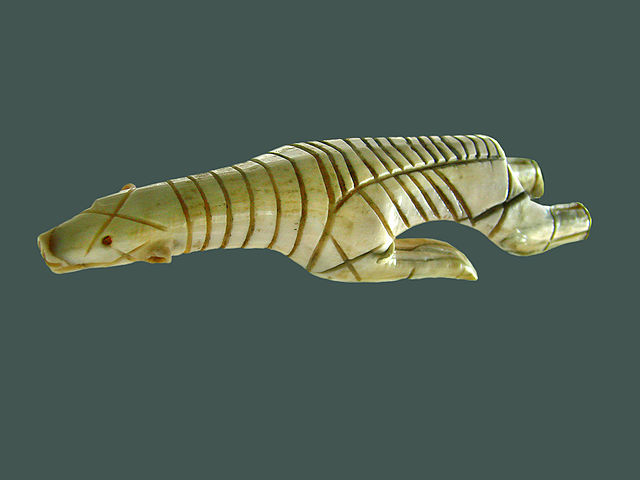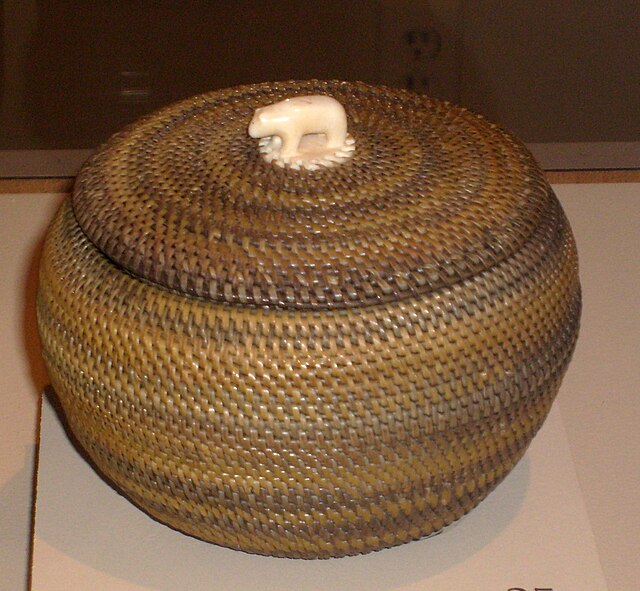Inuit art, also known as Eskimo art, refers to artwork produced by Inuit, that is, the people of the Arctic previously known as Eskimos, a term that is now often considered offensive. Historically, their preferred medium was walrus ivory, but since the establishment of southern markets for Inuit art in 1945, prints and figurative works carved in relatively soft stone such as soapstone, serpentinite, or argillite have also become popular.
Angakkuq, a sculpture by Pallaya Qiatsuq (Cape Dorset, Nunavut Territory, Canada)
Swimming polar bear carved from walrus ivory, Middle Dorset culture, Iglulik region, Canada
Alaskan Inupiat woven baleen basket with a walrus ivory finial, depicting a polar bear, c. early 20th century
Soapstone is a talc-schist, which is a type of metamorphic rock. It is composed largely of the magnesium-rich mineral talc. It is produced by dynamothermal metamorphism and metasomatism, which occur in subduction zones, changing rocks by heat and pressure, with influx of fluids but without melting. It has been a carving medium for thousands of years.
Samples of soapstone
A block of talc
Mythological figures carved in soapstone by Kayasark, Inuit carver, held in the Honolulu Academy of Arts
The 21st-century BC statue of Iddi-Ilum of Mari, Syria, is made of soapstone







